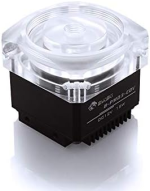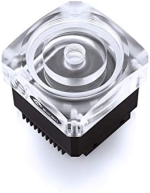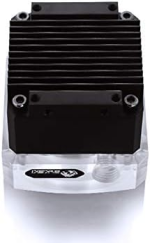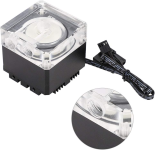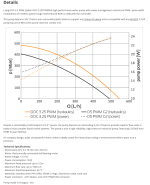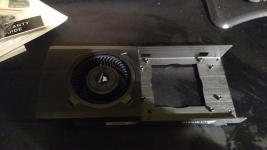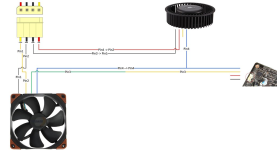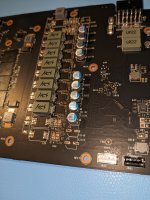Zarathustra
Cloudless
- Joined
- Jun 19, 2019
- Messages
- 4,385
- Reaction score
- 4,729
I have been considering making some changes to the water loop layout as well.
Consideration #1:
Splitting up dual D5's to two separate D5's and having each power just one block of the game machine (one for CPU, one for GPU.)
My plan has originally been to dedicate a dual pump top of the two blocks in the game machine, but I have been thinking. Dual pumps (in series) DO scale, but they do not scale well. Generally if you want better flow, it is better to reduce head pressure. I bet I could get better flow over both the blocks, if I run them as separate sub-loops from the same reservoir, with just one pump each.
I'll have to think about this. I'll have to buy more tubing, and one more set of QDC's but that might be a small price to pay...
Consideration #2:
I currently have all D5's. I was going to continue using D5's, but then I thought of something. I'll be using 5 D5 pumps. (one per radiator, one for the workstation CPU block, one for the game machine CPU block and one for the game machine GPU block)
D5's dump their heat into the loop. D5's can consume up to 25W each. That's an additional 125w of heat being dumped into my loop.
DDC pumps do not dump their heat into the loop. They can even be equipped with small heat sinks on the bottom to help them dispatch their heat tot he surrounding air.
DDC pumps also do not achieve as high of a flow rate as D5's do (unless under very high head pressure).
I still want my flow to be exceptionally high across the game systems blocks (and I should be able to accomplish that with a one D5 pump to one block ratio) but the other pumps output are a lot less flow dependent. Maybe I would switch out the radiator pumps and the pump for the workstation to all be DDC pumps? That would certainly limit the system wide pump heat load...
DDC pumps seem to ave become less popular lately though. I've been searching, and there aren't too many options that are available and in stock from trusted brands.
I am going to have to give this some thought.
Consideration #1:
Splitting up dual D5's to two separate D5's and having each power just one block of the game machine (one for CPU, one for GPU.)
My plan has originally been to dedicate a dual pump top of the two blocks in the game machine, but I have been thinking. Dual pumps (in series) DO scale, but they do not scale well. Generally if you want better flow, it is better to reduce head pressure. I bet I could get better flow over both the blocks, if I run them as separate sub-loops from the same reservoir, with just one pump each.
I'll have to think about this. I'll have to buy more tubing, and one more set of QDC's but that might be a small price to pay...
Consideration #2:
I currently have all D5's. I was going to continue using D5's, but then I thought of something. I'll be using 5 D5 pumps. (one per radiator, one for the workstation CPU block, one for the game machine CPU block and one for the game machine GPU block)
D5's dump their heat into the loop. D5's can consume up to 25W each. That's an additional 125w of heat being dumped into my loop.
DDC pumps do not dump their heat into the loop. They can even be equipped with small heat sinks on the bottom to help them dispatch their heat tot he surrounding air.
DDC pumps also do not achieve as high of a flow rate as D5's do (unless under very high head pressure).
I still want my flow to be exceptionally high across the game systems blocks (and I should be able to accomplish that with a one D5 pump to one block ratio) but the other pumps output are a lot less flow dependent. Maybe I would switch out the radiator pumps and the pump for the workstation to all be DDC pumps? That would certainly limit the system wide pump heat load...
DDC pumps seem to ave become less popular lately though. I've been searching, and there aren't too many options that are available and in stock from trusted brands.
I am going to have to give this some thought.

